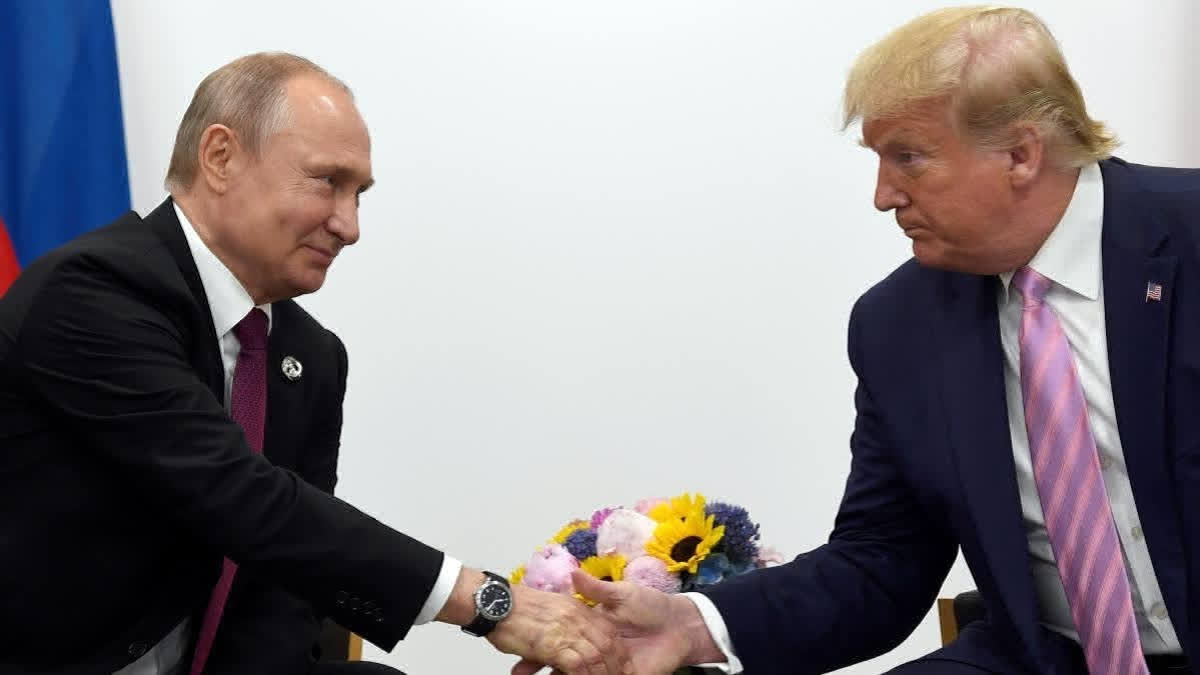On 24 February 2025, the Ukrainian conflict will enter its fourth year. A change in the White House resulted in Volodymyr Zelensky, the Ukrainian President, offering to commence talks to end the conflict. In an interview to British journalist Piers Morgan, Zelensky, in response to how he felt sitting across the table with Vladimir Putin mentioned, "If that is the only set-up in which we can bring peace to the citizens of Ukraine and not lose people, definitely we will go for this set-up." He added that talks can only happen after he discusses his proposals with US President Donald Trump.
Meanwhile, Trump disclosed that he has already telephonically discussed with Putin on ending the war. He refused to mention how many times he and Putin have already spoken. He mentioned, "Every day people are dying. This war is so bad in Ukraine. I want to end this damn thing." Feeling ignored Zelensky mentioned that Putin wants to deal directly with Trump ignoring Kyiv. Zelensky stated, "We cannot let someone decide something for us," but there is little he can do.
In the past three years, the war has witnessed changes in tactics and the development of military technology at a pace which the world has not seen in decades. These are lessons for many nations, including India. For the first time since the Second World War, modern states were involved in a full-blown war, directly or indirectly.
The Ukrainian forces had been trained and equipped by the US and NATO since the occupation of Crimea by Russia in 2014. Russia knew that the war against Ukraine will be nothing like what they had faced earlier in Georgia and Afghanistan. It initially believed it could reach Kyiv in no time based on its military power but ended up facing early setbacks, largely due to the doggedness of Ukrainian forces, compelling it to rethink its strategy and tactics. Losses on both sides have been high, true figures of which will never be available.
There was immense learning for both nations in the first stages of the war. For Russia, the use of armour including employing them for encirclements and shock and awe, as was the concept, is no longer possible as defenders with mobile anti-tank weapons, including cheap drones, can impact manoeuvrability and cause heavy losses.
It was compelled to change its battlefield tactics, modify its tanks as also boost production of military equipment to recoup its losses as the war progressed. Ukraine received NATO equipment but learnt that most of the armour supplied was unsuitable for their terrain. Further, Russia planted extensive minefields and other armour obstacles, which stalled Ukrainian offensives.
Russian drone technology was backward as compared to the US, at the commencement of the war. The US had extensively employed drones in Afghanistan and other regions of the world. Russia revealed its Lancet drones only in 2019 and was still testing them when the war commenced. It initially employed Iranian drones and learning fast, began mass-producing its Lancet drones with carry a 40 kg warhead. These were exploited to target infrastructure as also static and mobile military targets. Their costs were way below those employed by the West.
Ukraine, at the same time, began mass producing small drones almost as a cottage industry, using China-procured components from the open market. It was producing them in the hundreds each costing under USD 350. On the battlefield, Ukrainian soldiers would strap explosives on them and target Russian tanks or artillery pieces, controlling them in flight. While more drones were employed on each target, yet were cost effective. Innovation was the game on both sides and Ukraine was the testing ground.
To overcome Ukraine’s S300 anti-aircraft missile systems, Russians were forced to develop glide bombs with a one-and-a-half-ton payload, enabling targeting infrastructure from a distance. Russia initially tested the Penicillin counter-battery artillery system employing sound waves with a range of 25 kms in 2018. The war compelled it to speed up trials and its induction. In 2023 it confirmed the arrival of the equipment on the battlefield. The introduction of hypersonic missiles by Russia is another such example of rapid testing and production. The war speeded up the development and manufacturing of new equipment.
